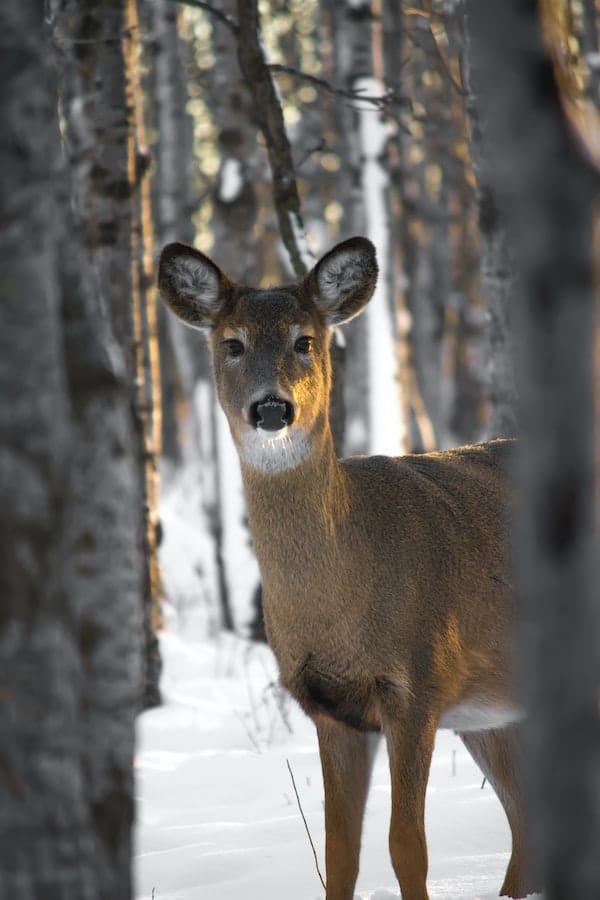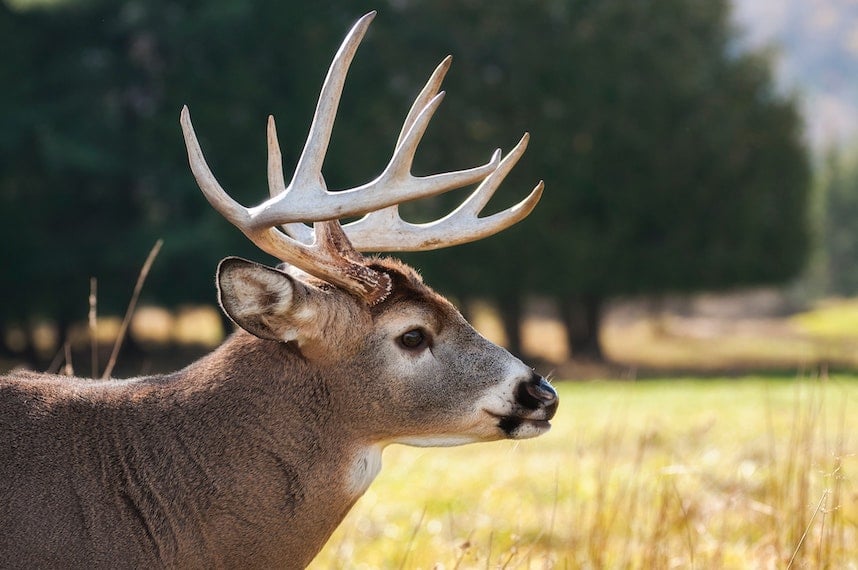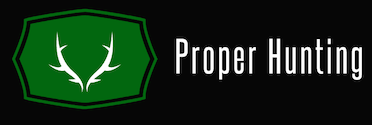Deer movement is motivated by many things, especially food until breeding season. I’ve had the discussion a hundred times in my life, and everyone seems to have a different answer. There are lots of variables to this question like region, age of the animal, time of year and food availability. In the below, learn when and why deer move the most! The short answer to when do deer move most is just after sunrise, and just before sunset in relation to hunting possibilities. Deer typically move throughout the evening/night, but you can’t hunt during these times. With that said, you better be ready to get up early, and sit till dark to see the big boys walking around
Much of the year, deer bed to feel safe and secure, and it is during this bedding time that they are also fully digesting their food. When the deer gets hungry again, they go back out to feed. Those movements are typically at sunrise and sunset. There are times when deer move throughout the day, but if there is increased hunting pressure, they will move more in cover than out in the open – exposing themselves to hunters.
Deer have a very unique lifestyle, as they can travel a very large area throughout their life-span. About 70 percent of yearling bucks will disperse from where they are born. Once they set up their home range, it’s usually between 600 to 1000 acres. This area also depends on the quality of the habitat. Like every living organism, deer need food, cover and water. If a habitat meets all those needs, then deer won’t move as much. During the rut, that home range expands. However, there are different factors that make a deer to move from one place to another.
When do deer move most and why?
There are many reasons why an animal leaves its own habitat, below are some factors that can influence deer movements.
- Temperature

Having low temperature or cold fronts are a piece of good news for every hunter because the temperature does speak a lot as to when deer will become active.
- Wind Condition
With the exception of the rut, deer typically lay low in the day time during high wind. Since the wind affects their ability to hear, they often bed longer on windy days.
- The phase of the Moon
Another factor that may affect deer movement is the moon phase. There is evidence that the lunar cycle influence deer activities. During a full moon, some say deer move much more during the night hours, cause of the additional natural light.
- Photoperiodism
Similarly, most animal behavior is influenced by photoperiodism, which is the change in the amount of daylight. As the amount of sunlight being reflected off the moon and to the earth varies with the lunar cycle. Deer’s peak movement occurred, as expected, around dusk in all phases except one. During the new moon, movement rate peaked near dawn and lasted a little longer into the early morning. Also, the deer’s irregular sleeping habits allow them to maintain their energy and have some rest while taking advantage of the darkness. This means that the deer are more active when darkness is present than they are during the day.
Deer also sleep in direct sunlight to stay warm while they move often at night to keep themselves undetected to the predators. They find a warm spot to sleep in when the temperatures reach the frigid lows. Deer often take shelter under coniferous trees like pine trees when temperature drops down and reaches its lowest and the coldest point. The dense trees that have low branches protect deer from feeling cold and even creating a roof that holds heat. This way, they were able to conserve their energy.
- Breeding Time
Another important factor to consider by hunters when it comes to tracking deer movement is the rut. The rut is the mating period for deer, and encompasses all physiological and behavior activities associated with courtship and breeding. When deer are making scrapes and rubs during the active rut time of year, their more active during the day, and all bets are off. If a hot (ready to breed) doe is near by, bucks go crazy.
For a hunter, peak rut is that magical time when even normally super-wary mature bucks briefly drop their guard and expose themselves.
- Barometric pressure
The biggest aspect of weather that greatly affects the deer and other animals movement is the atmospheric pressure, also known as the barometric pressure. Deer have the ability to sense these changes. A barometer is the instrument we measure this with and it refers to the amount of air pressure exerted by air molecules against the earth’s surface. If the air molecules above the earth’s surface are not as dense, the result will be a decrease in barometric pressure. The resulting low-pressure system is known to usher in clouds, rain and/or snow. High pressure on the other hand, tends to be clear or very few clouds, low humidity and fair weather.
Deer’s inner ear works very much the same way a barometer works. In fact, it’s said that ancient man also had the ability to better sense these changes. Animals’ ability to sense the change in barometric pressure is likely Mother Nature’s way of protecting the herd.
- Hunting Pressure
Areas who have been exposed to hunters are more likely to get less deer activity, especially in the day time. As deer season goes on each year, deer get more and more nocturnal, and it becomes harder and harder to see deer during active shooting light.
What are the best times of the day to hunt a deer?
You may be wondering, what is the best time to see a deer since according to study and observations, most research shows the deer killed around 10:00 – 11:30 A.M.
When do deer move most for a Hunt!
Morning Hunt
One of the best time to hunt a deer is the first hour in the morning when deer are about to go back to their bedding areas, especially for those deer who were feeding throughout the night, this period could be one of those times where you can spot deer walking around and following the trails going to bedding.

- Afternoon Hunt
This is the time of the day when deer are about to get out of their beds and go on their way to look for food. Deer are very active during the night time since they keep themselves guarded against the predators and hunting during the day. Taking into all accounts all kinds of big game, the afternoon hunts will usually be somewhat more predictable than the morning hunts. This is largely because anything that occurred under the cover of the darkness has been long forgotten by the animals.
- Morning vs evening hunts
If you are to compare evening to morning, there are things that you can only get in the morning on a hunt, and vice versa for evening hunts. Unlike the evening, deer often filter back into the bedding areas during the early morning hours before the daylight. if you can afford to buy a game camera that you can use in tracking the movements of the deer it will surely help you decide what strategy you should have in tracking down the deer walking in their own trails.
Another thing is that you can move quietly during the day time because you can see the place you are moving in. You can even get into your position quietly unguarded and not noticed. However, during the evening most deer are currently in search for food. Their movement is often very predictable. This is especially during the early part of the bow season and in the late part of the season when their primary focus is food. Unlike in early mornings, they move all at once and their evening movements are often coordinated and very visible as they move down the trails, heading to a place somewhere where they can fill their empty bellies.
- Midday
During this time, deer often stay in their beddings and conserve their energy so they can use it in the later part of the day wherein predators are even more active like them. For some hunters, midday hunting is considered as the best time to look for a mature buck. Often times, deer just like to stretch their legs a bit from time to time. They will move yards away from their bedding area and they always do this routine every day. Also, most of the deer love to drink/water during this time.
A deer’s daily routine isn’t exactly as clear-cut as a human. Deer don’t exactly work off a planner, minute-by-minute. Still, their activities unconsciously fall under a certain pattern. Unlike our routines that are dictated by the concept of schedules and time, theirs is a routine driven by instinct and needs. This outline should help you understand when deer move most and how you can capitalize on that movement.
While you are here, you may want to check out:
- 5 Best Places To Hang A Tree Stand
- Meet Greg, the Author of Proper Hunting
- Best skinning knives of the year!
Happy hunting!
